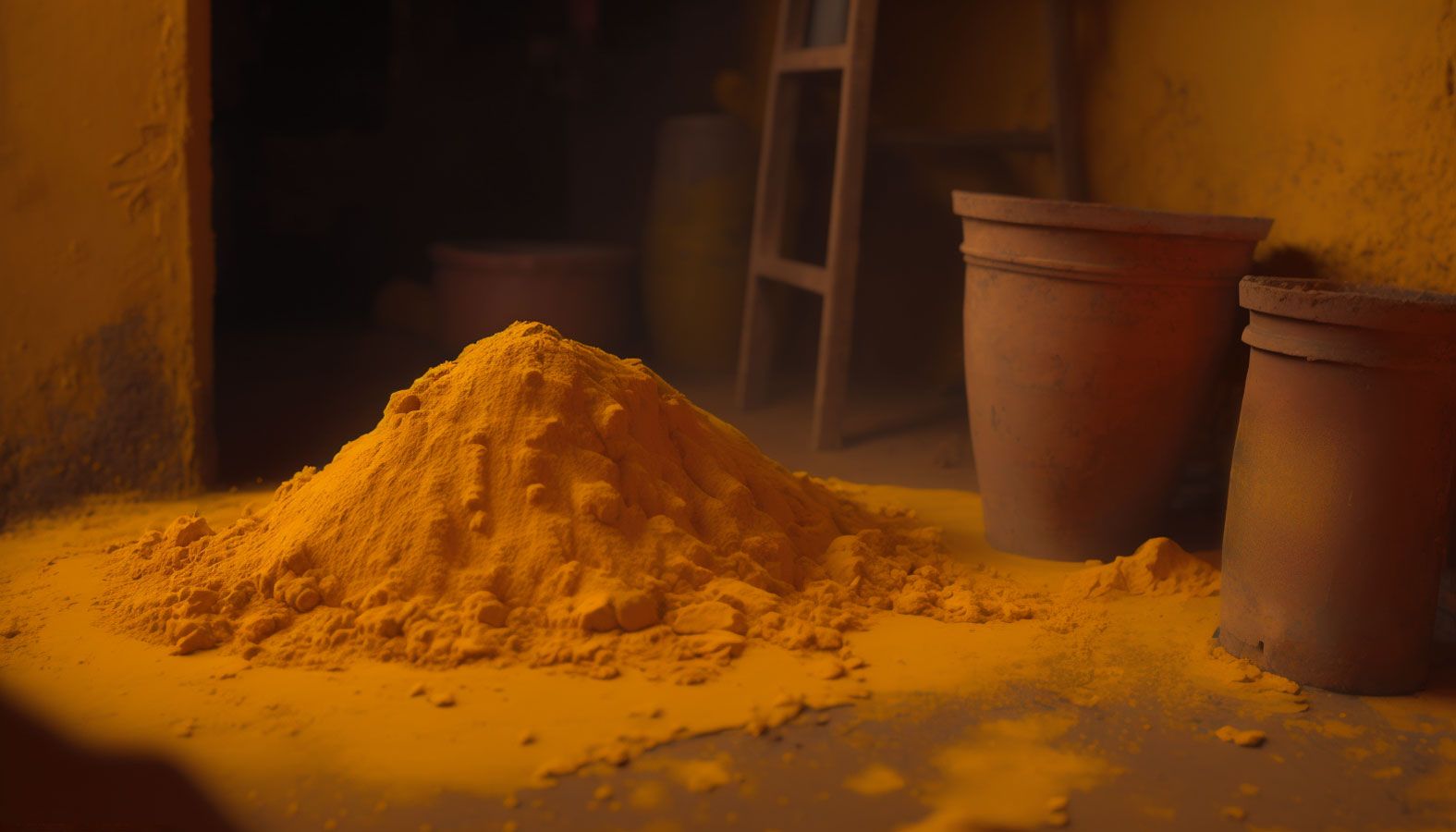
Yellow ocher is a pigment that artists have used for centuries to create stunning works of art. Its warm and earthy tones make it a favorite among painters from the ancient Egyptians to the modern day. In this article, we explore the fascinating history and properties of yellow ocher, from its origin as a natural earth pigment to its use in contemporary art. We will also examine the different ways in which artists have used yellow ocher throughout history and how it has evolved over time. Join us on a journey through the rich history of this iconic pigment.
Composition and Properties
Ocher is a type of natural earth pigment, a group of pigments that include yellow ocher, red ocher, purple ocher, sienna, and umber. Ocher is composed of iron oxide, clay, and silica. The amount of each component in the pigment affects its color and properties. Yellow ocher is the most commonly used pigment of all the ochers, and it is an iron oxide hydroxide (α-FeOOH), also known as gold ocher.
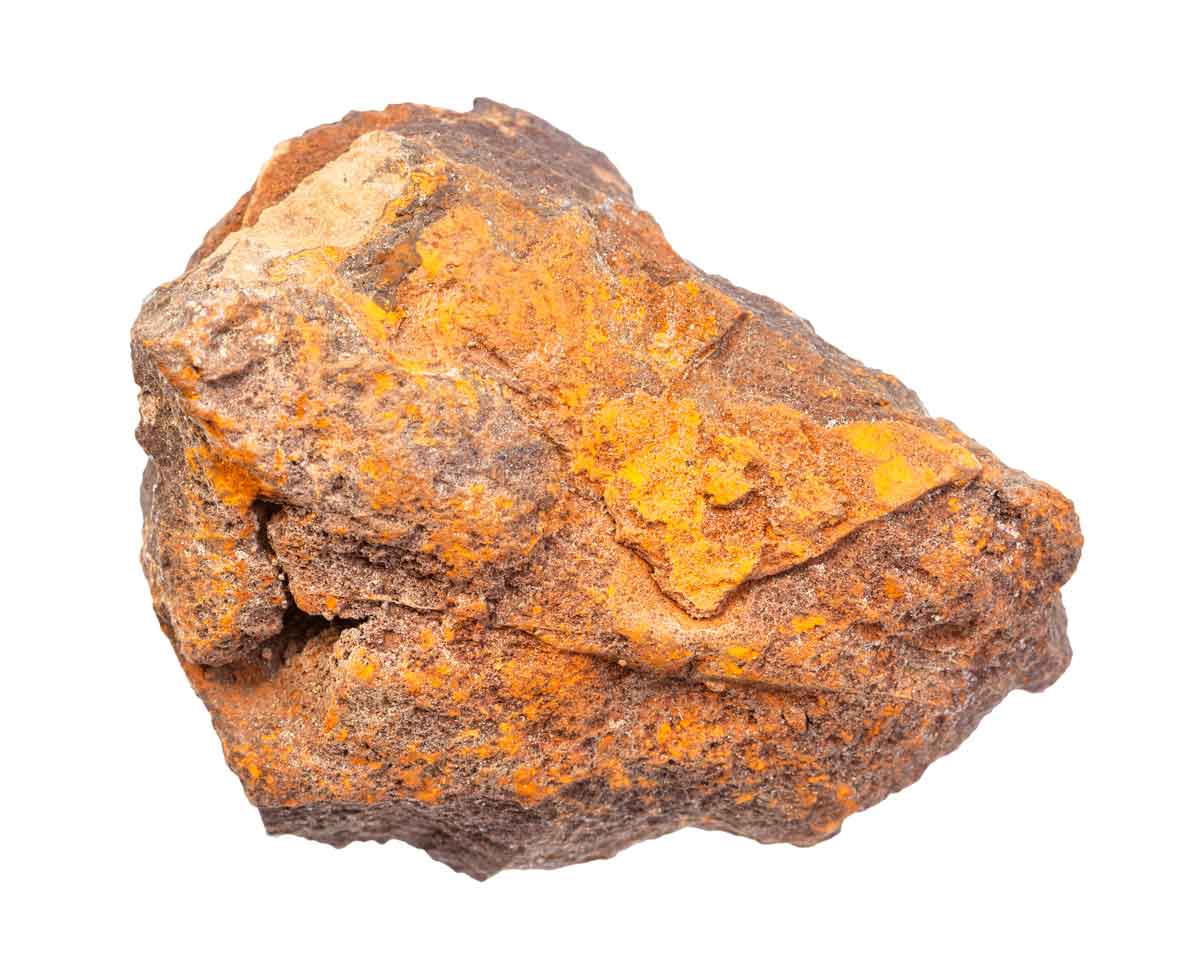
Rough limonite—a natural mineral and a source of yellow ocher
Yellow ocher is derived from natural minerals found in many locations of the earth. Limonite is the primary component of yellow ocher pigments. Before modern mineral analysis, the name “limonite” was given to many yellowish to yellowish brown iron oxides produced during the weathering of iron-bearing rocks. Limonite often contains significant amounts of iron oxide minerals such as goethite and hematite. Limonite does not meet the definition of a mineral. Instead, limonite is a mineraloid composed mainly of iron oxide hydroxide, often found in intimate associations with various iron minerals. The name limonite is currently used for unidentified hydroxides and oxides of iron, with no visible crystals and a yellow-brown streak. The most common mineral species of limonite is goethite, but it can also consist of varying proportions of lepidocrocite, hisingerite, pitticite, jarosite group species, maghemite, hematite, etc.
Goethite is the coloring substance of yellow ocher pigments, and hematite (sometimes with magnetite) is that of red ocher and other earth pigments. For example, umber (‘terre d’ombre’) contains manganese oxides in addition to iron oxide. The shades of ocher pigments are related to the mineral content of goethite, hematite, and magnetite and secondary or accessory minerals, such as quartz, gypsum, anhydrite, calcite, calcite, dolomite, and alum (jarosite), and to the iron and manganese substitution in the hematite structure.
Red ocher gets its reddish color from hematite, an anhydrous iron oxide. Purple ocher has the same chemical makeup as red ocher but appears to have a different hue due to various light diffraction properties connected with larger average particle size. Brown ocher, commonly known as goethite, is a partly hydrated iron oxide. Sienna contains both limonite and a small amount of manganese oxide, giving it a darker shade than ocher. Umber pigments have a higher amount of manganese, which gives them a dark brown color.
When heated, yellow ocher, sienna, and umber pigments are dehydrated, and some of the limonite transforms into hematite, giving them a reddish hue, referred to as red ocher, burnt sienna, and burnt umber. Modern ocher pigments are often manufactured using synthetic iron oxide identified as PY 42 (Pigment Yellow 42), while natural ocher pigments are identified as PY 43 (Pigment Yellow 43) in the Colour Index classification.
-
Yellow ocher, α-FeOOH, an iron oxide hydroxide (limonite), is yellow from the mineral goethite.
-
Red ocher, Fe2O3, takes its reddish color from the mineral hematite, which is an anhydrous iron oxide.
-
Purple ocher is identical to red ocher chemically but of a different hue caused by different light diffraction properties associated with a greater average particle size.
-
Brown ocher, also α-FeOOH, iron oxide hydroxide or goethite, and other iron oxide minerals.
-
Sienna contains both goethite and a small amount of manganese oxide (less than 5%), which makes it darker than yellow ocher. They are also typically more transparent than ochers because they contain larger proportions of clay or other accessory minerals.
-
Umber pigments contain a larger proportion of manganese (5–20%), which gives them a dark brown shade.
Origin and Source
Yellow ocher is found in many parts of the world, including France, Italy, Spain, and the United States. It is typically composed of clay, silica, and various amounts of iron oxide, giving it its distinctive yellow hue. One of the earliest known sources of ocher is the Blombos Cave in South Africa, where ocher artifacts dating back 75,000 years have been found. The quality of yellow ocher can vary depending on where it’s sourced. Some of the highest quality yellow ochers today come from Italy and France. The pigment is traditionally sourced through mining or by collecting it from natural ocher deposits. In some regions, ocher is still harvested using traditional methods, including simple tools such as picks and shovels.
History of Uses
Throughout history, ocher pigments have played a significant role in human evolution and have been found in archaeological sites dating back thousands of years. Evidence of ocher’s use in Africa dates back to around 300,000 years ago, while evidence of its use in Australia dates back 50,000 years. In Wales, the Red Lady of Paviland, a Paleolithic burial site, was coated in red ocher around 33,000 years ago. Paintings of animals made with ocher pigments have been found in Paleolithic sites in France and Spain, and the cave of Lascaux has a 17,300-year-old image of a horse colored with yellow ocher. The use of ocher in ancient times was so intensive that a layer of the cave floor could be impregnated with its purplish-red color to a depth of eight inches.
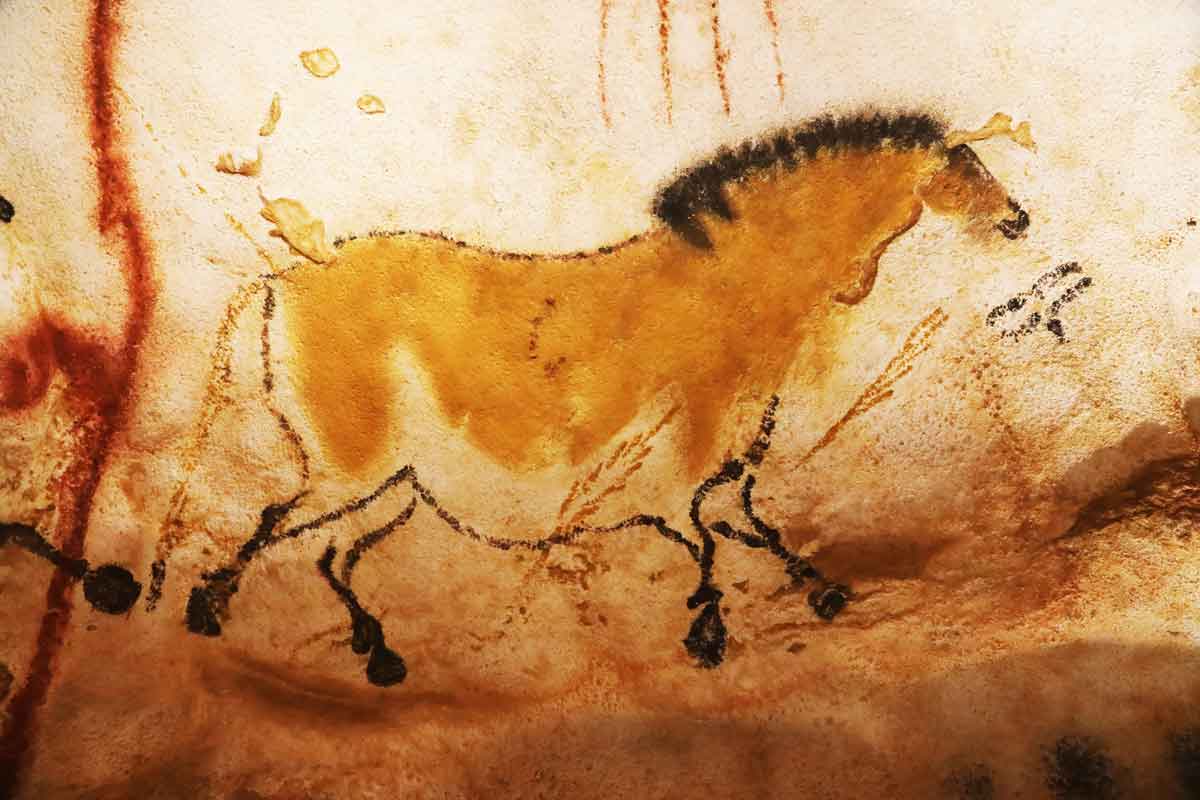
A prehistoric horse depicted in Lascaux caves painted with yellow ocher
Notable uses of yellow ocher are found in ancient Greece. The use of yellow ocher in Macedonian paintings can be defined by its various pictorial functions, as follows:
-
When used in its pure form, yellow ocher was employed in various ways for decorative purposes. It was applied in uniform layers to accentuate architectural elements on monumental chamber tombs or in floral or geometric motifs on cist tombs.* Additionally, it was used to indicate yellow areas within figurative compositions. According to Pliny, various yellow ochers were reserved for specific pictorial uses. For instance, Scyric ocher, a dark type of ocher from the island of Scyros, was recommended for creating the shadows of a painting. Meanwhile, light ocher from Gaul and Attic was used for painting different types of light.
-
Yellow ocher was also mixed with lime to tint plasters in the colored fresco interiors of monumental chamber tombs or cist tombs.
-
It was also combined with other pigments to create new hues of color, most frequently greens, which are obtained by mixing yellow ocher with Egyptian blue or carbon black. Browns can also be produced by combining yellow ocher with serpentine or carbon black and hematite.
-
In addition, yellow ocher was mixed with other green pigments, such as conichalcite** and malachite, to modify their tonality.
-
It was also applied as an undercoat to cinnabar and vermilion to produce an orange hue, which was also used with red ocher.
-
Lastly, yellow ocher was used as an undercoat to gold leaf in a gilding base named by Pliny as leucophorum.***
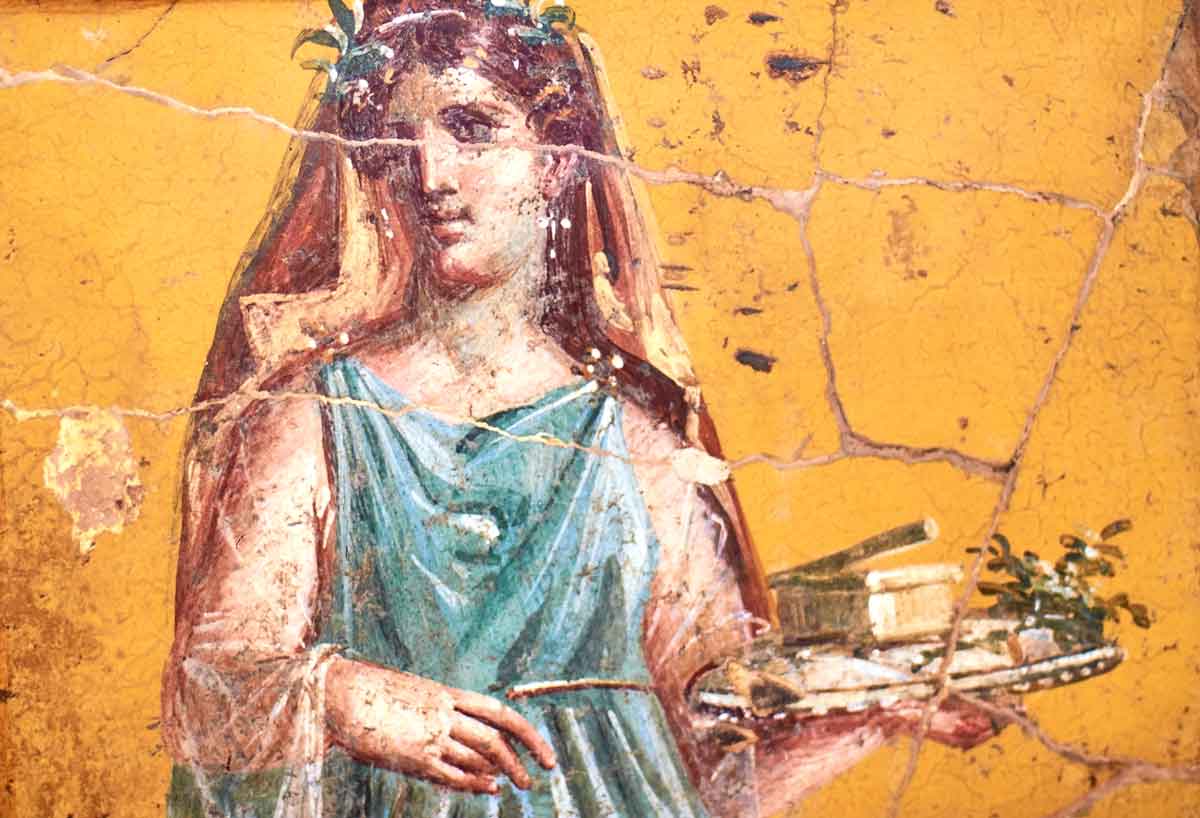
The background of the figure of a woman painted in yellow ocher in a fresco in a domus located in the Roman town of Pompeii
Ocher has also been used as a cosmetic, particularly in ancient Egypt. It was used as a pigment in eye makeup and was believed to have healing properties. In medicine, ocher has been used to treat various ailments, including diarrhea, dysentery, and skin conditions. Finally, ocher has been used as a building material. It has been used to make adobe bricks and as a pigment in plaster.
Yellow ocher has been a popular choice for artists for centuries. Today, yellow ocher continues to be widely used in contemporary art. Artists use it for painting landscapes, portraits, and still-life compositions. The pigment is incredibly versatile and can be used in various art styles, from realism to abstract. Yellow ocher is often used in painting to create natural landscapes, sunsets, and skin tones. The pigment can be mixed with other colors to create a range of warm, earthy hues.
Permanence and Compatibility
One of the most notable characteristics of yellow ocher is its high permanence, meaning it is resistant to fading or degradation over time. When mixed with water, it creates a stable suspension compatible with various other pigments and mediums, including oil and acrylic paints, watercolors, and gouache.
One study of young yellow ocher paint films found it most vulnerable to changes in mechanical properties caused by prolonged exposure to water. The vulnerability toward water may partly relate to the hygroscopic clay mineral content of yellow ocher, which is known to promote the adsorption and transport of water into the bulk paint. The study was conducted of Winsor & Newton yellow ocher oil paint ground in safflower oil.
In terms of its permanence, yellow ocher is highly resistant to light, heat, and atmospheric pollutants, making it a popular choice for artists looking for a long-lasting pigment. It has been used in various artworks throughout history, including frescoes and oil paintings.
Ocher pigments have been an essential part of human history, used for various purposes such as art, body decoration, and coatings. They come in different shades, but all contain limonite and hematite as their primary components. The use of ocher dates back to prehistoric times, and evidence of its use has been found in many parts of the world. ocher is not only a pigment but a window to our past, providing insight into early human evolution, culture, and art.
Color Notes: Yellow Ochers
In this episode of Colors Notes, we look at two popular yellow ochers from among the nine Rublev Colours yellow ocher artist oils made by Natural Pigments: Blue Ridge Yellow Ocher and Lemon Ocher. We show you how to make oil paint and how these ochers appear as tints with white—lead white and titanium white. Then we mix them with ultramarine blue and Prussian blue. Experience the beauty of yellow ochers. Watch on the Rublev Colours YouTube channel.
Yellow Ocher Pigment


Blue Ridge yellow ocher pigment from quarries in the Blue Ridge Mountains of Virginia, USA.


Lemon ocher pigment from quarries near Sant'Ambrogio di Valpolicella, a municipality in the Verona province in the Veneto region of Italy, about 120 kilometers (75 miles) west of Venice and about 15 km (9 mi) northwest of Verona.
Yellow Ocher Oil Paint


Blue Ridge yellow ocher is an opaque ocher composed of very fine particles. In the drawdowns on this page of both colors, the ocher is seen at full strength (masstone) directly from the tube and as a tint mixed 1:2 with titanium white. Drawdowns consist of paint applied to a card in precise thicknesses.
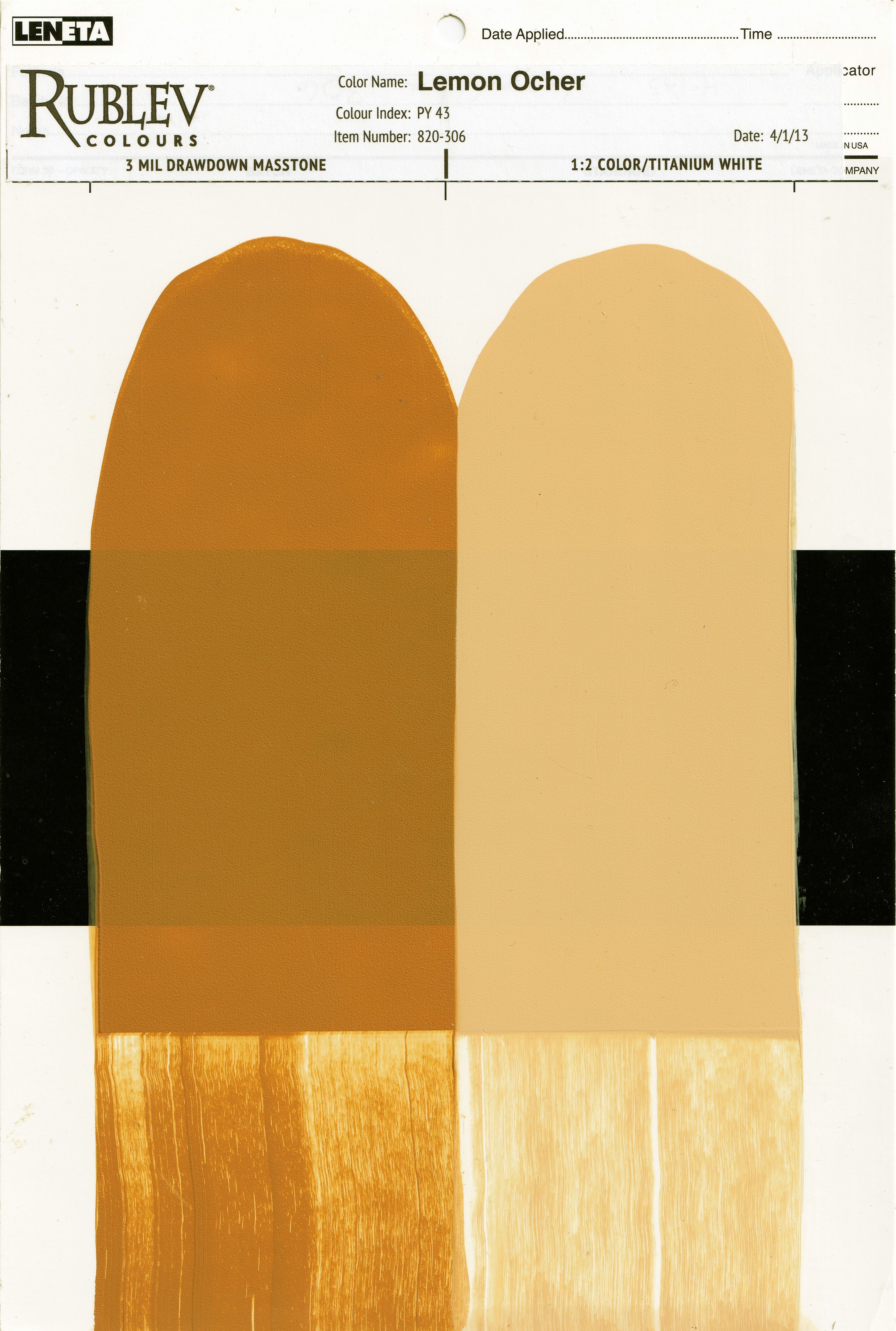

The relative transparency of Lemon Ocher compared to Blue Ridge Yellow Ocher is apparent in this 3 mils thick paint application on the drawdown. The black area behind the masstone of the lemon ocher is visible. Also visible is the texture of this pigment due to its larger average particle size.
Pigment Specifications
| Pigment Information | |
| Color: | Yellow |
| Color Index: | Pigment Yellow 43 (77492) |
| Chemical Name: | Iron Oxide Hydroxide |
| Chemical Formula: | α-FeOOH |
| ASTM Lightfastness Rating | |
| Acrylic: | I |
| Oil: | I |
| Watercolor: | I |
| Properties | |
| Density: | 2.9–4.3 |
| Hardness: | 4.0–5.5 |
| Refractive Index: | 2.260–2.398 |
| Pigment Names | |||||||||||||
| Common Names: | English: yellow ocher French: ocre jaune German: Ockergelb Italian: giallo ocra Spanish: amarillo ocre |
||||||||||||
| Nomenclature: |
Blue Ridge Yellow Ocher
Lemon Ocher
|
||||||||||||
Frequently Asked Questions about Ochre/Ocher Color
Is it ochre or ocher?
Both "ochre" and "ocher" are correct spellings. "Ochre" is more commonly used in British English, while "ocher" is used in American English. Both refer to the same group of earth pigments.
What color is similar to ochre?
Colors similar to ochre include mustard, gold, and yellowish-brown. These colors share the warm, earthy tones characteristic of ochre. The earth pigments designated as ochre also include red and brown besides yellow shades.
Is ochre yellow or mustard?
Ochre is a spectrum of colors from yellow to deep orange or brown. Mustard is a shade within this range, so ochre can be yellow, mustard, or other shades.
What is the significance of color ochre?
Ochre has been significant in art and culture for thousands of years, symbolizing life and fertility in some cultures and used in ancient cave paintings. Its natural, earthy tones make it a popular choice in art.
How is ochre used in painting?
Ochre is used in painting for its rich, earthy tones. It's versatile, blending well with other colors, and is used in underpainting, layering, and creating natural scenes.
What are the different types of ochre used in art?
Types of ochre used in art include yellow ochre, red ochre, and brown ochre. Each type offers different shades and is chosen based on the desired artistic effect.
Can ochre be mixed with other pigments?
Yes, ochre can be mixed with other pigments to create a variety of hues and shades. Its natural tones make it a flexible color for mixing.
Is ochre pigment lightfast and durable in art?
Ochre pigments are known for their lightfastness and durability, making them a long-lasting choice in various art forms.
What yellow is similar to yellow ochre?
Similar yellows to yellow ochre include raw sienna and gold ochre, which share a warm, earthy tone. These colors differ slightly in intensity and hue but are close in appearance to yellow ochre.
How to make yellow ochre?
Yellow ochre is a natural earth pigment and is not typically made but mined. However, a similar hue can be mimicked by mixing a warm yellow with a small amount of brown or raw sienna.
Is mustard yellow the same as ochre yellow?
No, mustard yellow is generally brighter and more saturated than ochre yellow. Ochre yellow has a muted, earthy quality, whereas mustard yellow tends to be more vibrant.
What colors make up ochre?
Ochre is primarily composed of iron oxide mixed with varying amounts of clay and sand. Its color can range from yellow to deep orange or brown, depending on the specific mineral composition.
What is the difference between yellow ochre and gold ochre?
Yellow ochre is a light, earthy yellow, while gold ochre has a deeper, richer golden hue. Gold ochre is often more saturated and intense compared to the more muted yellow ochre.
References
Ashley Amanda Freeman, Judith Lee, Cecil Krarup Andersen, Naoki Fujisawa, Michał Łukomski and Bronwyn Ormsby. “A pilot study of solvent‑based cleaning of yellow ochre oil paint: effect on mechanical properties.” Heritage Science (2021) 9:28. https://doi.org/10.1186/s40494-021-00501-8.
Cristina Montagner a,b, Diogo Sanches a,b, Joana Pedroso a, Maria João Melo a,b, Márcia Vilarigues. “Ochres and earths: Matrix and chromophores characterization of 19th and 20th-century artist materials.” Spectrochimica Acta Part A: Molecular and Biomolecular Spectroscopy 103 (2013) 409–416.
Françoise Froment, Aurélie Tournié and Philippe Colomban. “Raman identification of natural red to yellow pigments: ochre and iron-containing ores.” Journal of Raman Spectroscopy. 2008; 39: 560–568. Published online 26 March 2008 in Wiley InterScience DOI: 10.1002/jrs.1858.
Georgios P. Mastrotheodoros, Konstantinos G. Beltsios. “Iron‑based red, yellow, and brown ochres.” Archaeological and Anthropological Sciences (2022) 14:35 https://doi.org/10.1007/s12520-021-01482-2.
Rachel Horowitz. “The Palette of the Prehistoric Cave Painters.” Archaeology, vol. 60, no. 5, 2007. 26–33., doi:10.2307/41780439.
John Mulvaney. “Ochre in Australia: 40,000 Years of Aboriginal Trade.” Archaeology, vol. 54, no. 2, 2001. 30–37., doi:10.2307/41772736.
“Ochre.” Wikipedia, Wikimedia Foundation, 28 Jan. 2023, https://en.wikipedia.org/wiki/ochre.
V. Perdikatsis, H. Brecoulaki. “The use of red and yellow ochers as painting materials in ancient Macedonia.” Proceedings of the 4th Symposium of the Hellenic Society for Archaeometry, National Hellenic Research Foundation, Athens. 28-31 May 2003.
Notes
* A cist is a small stone-built coffin-like box or ossuary used to hold the bodies of the dead.
** Conichalcite, CaCu(AsO4)(OH), is a relatively common arsenate mineral. It is green and occurs in the oxidation zone of copper deposits. It occurs with limonite, malachite, beudantite, adamite, cuproadamite, olivenite, and smithsonite.
*** Yellow and red ocher mixed with Melian earth is reported by Pliny for the application of gold-leaf, called “leucophorum”: “Half a pound of sinopis from Pontus, ten pounds of bright yellow ocher and two pounds of Greek earth of Melos mixed together and pounded up to twelve successive days make ‘leucophorum’, a cement used in applying gold-leaf to wood.”











